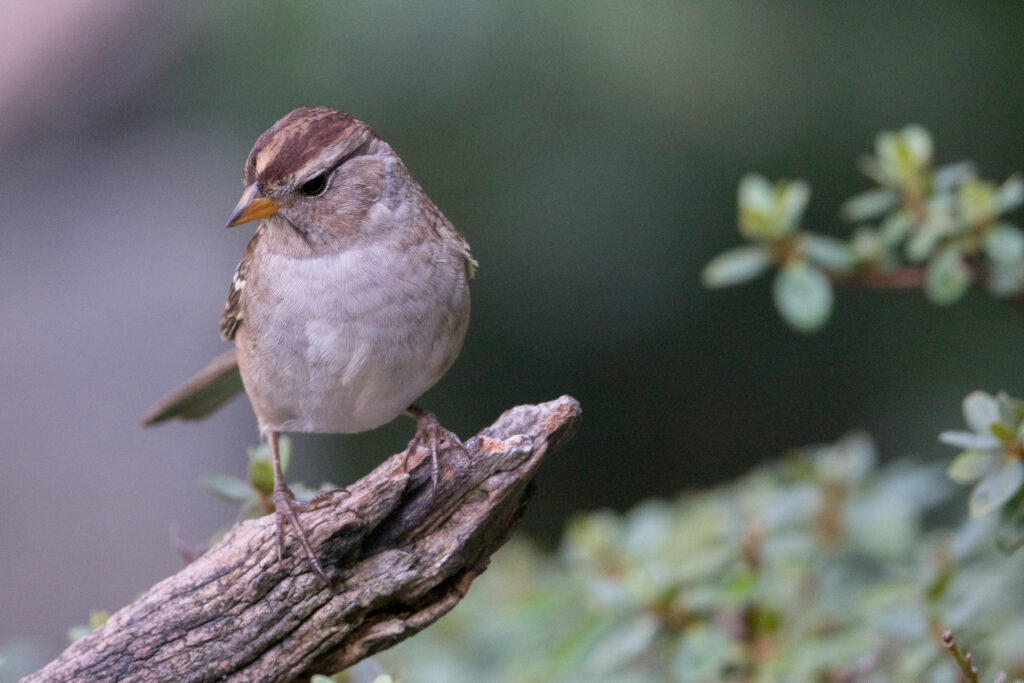With detailed photography I am able to examine birds far more carefully than mere field observations. Sadly, over the years I have observed MANY birds with disabilities including blindness in one eye (Downy woodpecker), break deformations (Spotted towhee and others) and the most common disability, limited or non-use of one leg (many species). Some of these birds remain in the yard for extended periods of time and some are one time observations/photographs.
We currently have a Spotted towhee with a beak deformation, a beak that is crossed much like a crossbill’s. This bird was apparently born in the immediate area and seems to be doing fine. It It seems motivated to enthusiastically spirit halves of peanut kernels into the bushes for a meal, so I assume that it is able to break the peanut into smaller pieces. I have many photos of the bird as its plumage has matured and have come to the conclusion that it has successfully learned to live with its handicap.
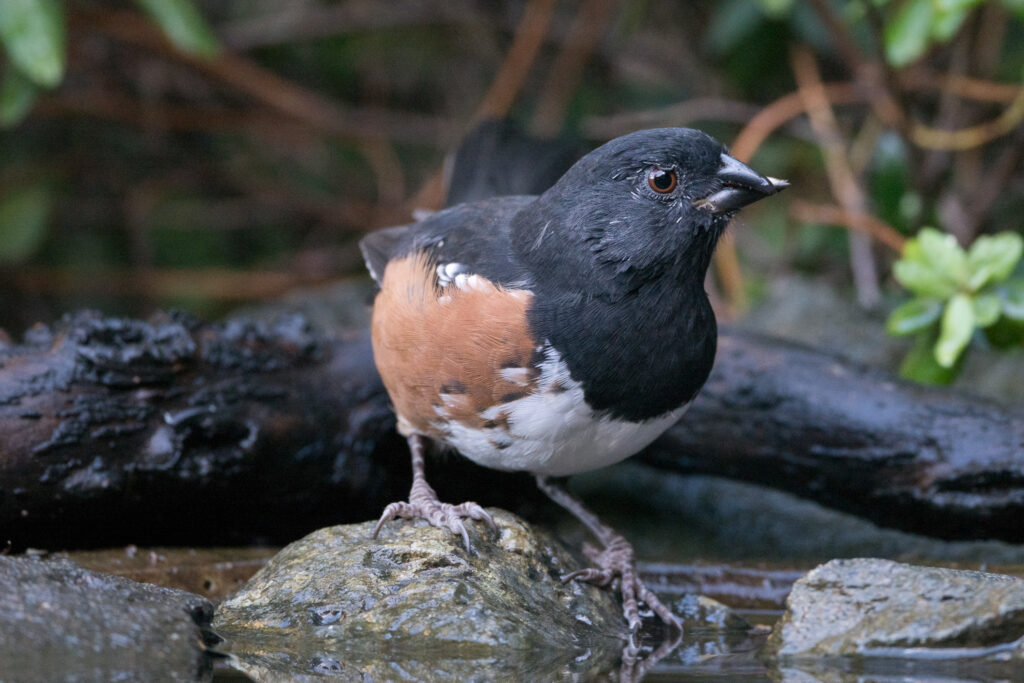
On 9/12/2023 I was saddened to see an adorable young Red-breasted nuthatch that apparently had the use of only one leg. This would seem to be a terrible handicap for a nuthatch which spends most of its life descending the trunks of trees! The nuthatch was able to successfully cling to an inverted suet feeder and a vertical peanut feeder, so I hope that it will be able to live with its disability.
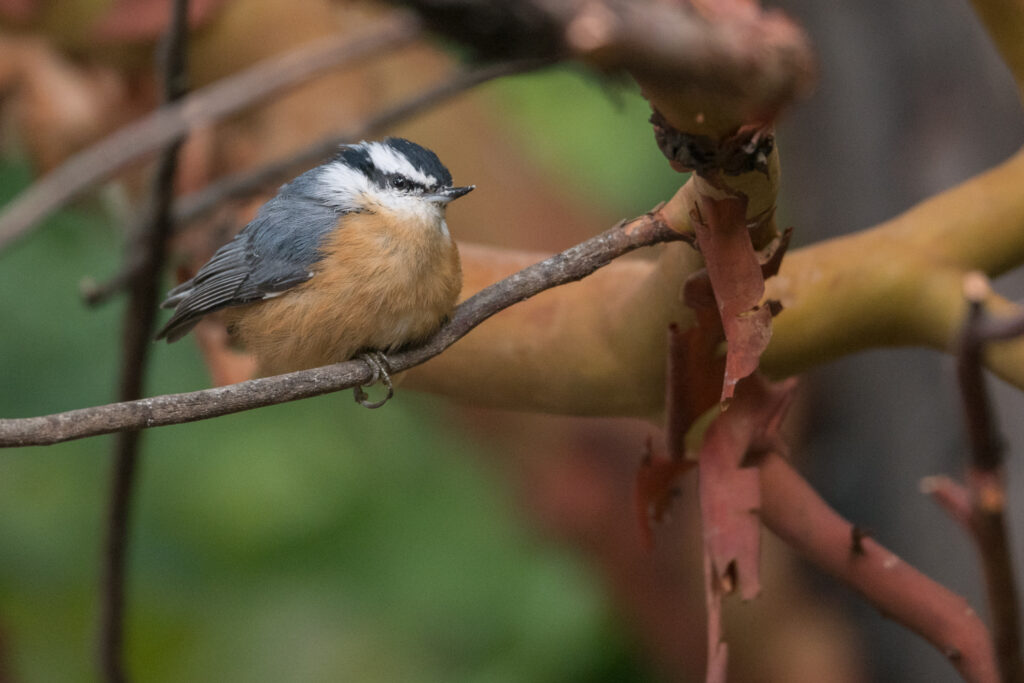
On the same day I observed a female House sparrow with one of its legs projecting towards the rear of its body. It’s been around all summer (this photo is from 8/6/2023) so it is apparently coping with its disability.
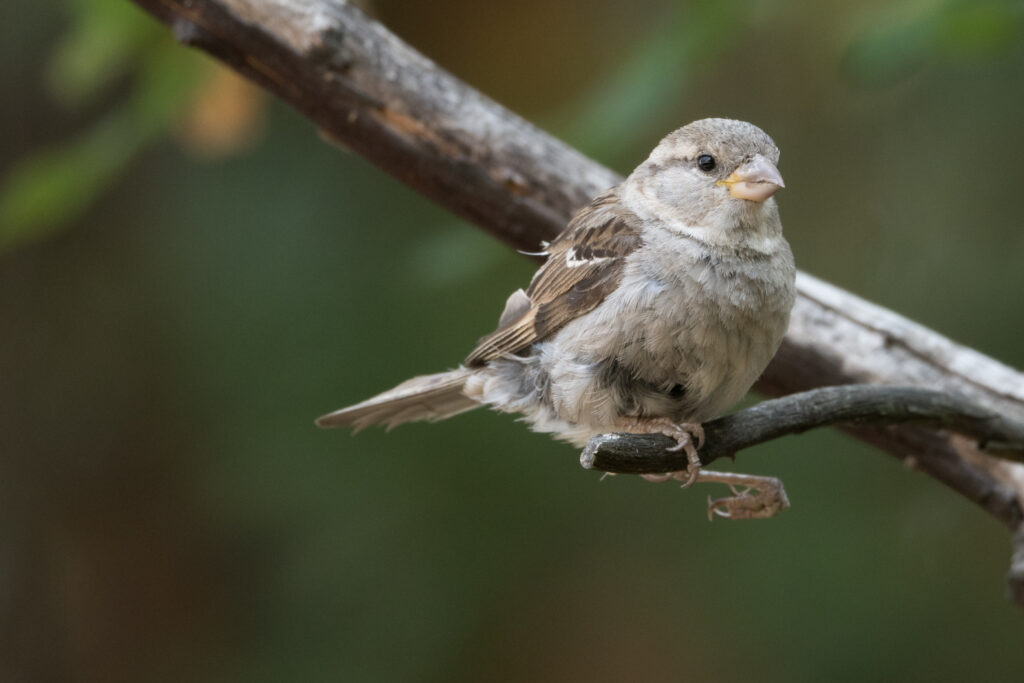
On a brighter note here are a few of the photographs I took on September 13, 2023:
An (apparently female) Ruby-crowned kinglet that is apparently the same one that has visited the yard each of the previous three days. I use the term “apparently female’ because the males of the species are so adept at hiding the red in their crowns. However, I was able to photograph this bird extensively and could detect no hint of red.
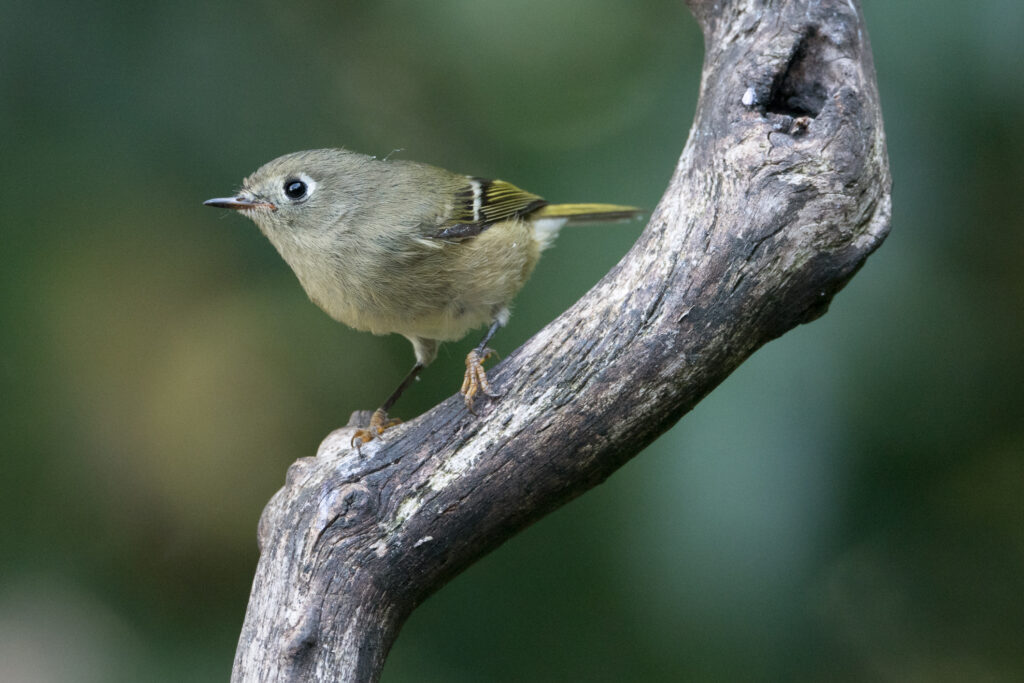
This male Downy woodpecker is a regular user of the newest water feature in our yard.
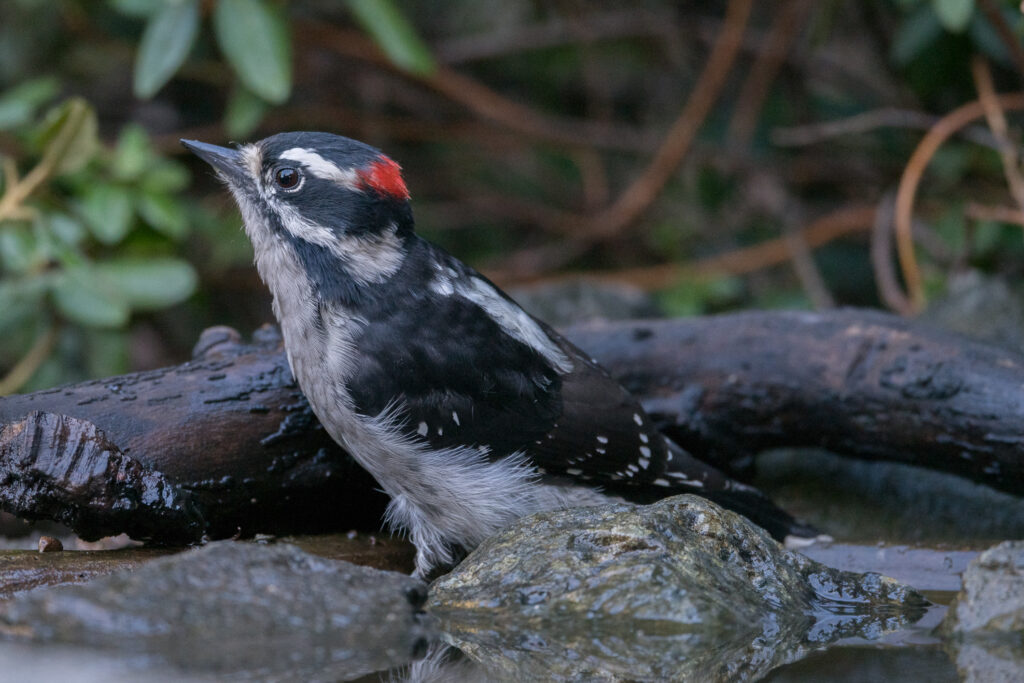
And finally, one of two juvenile White-crowned sparrows that were apparently raised in the immediate area. Both of its presumed parents are still in the yard but the juveniles are fully independent. Although White-crowned sparrows overwinter in the area, we almost never see them in the yard except in breeding season. In the past they have been parasitized by Brown-headed cowbirds, so it its heartening to see that this year the sparrows have successfully fledged their own young.
